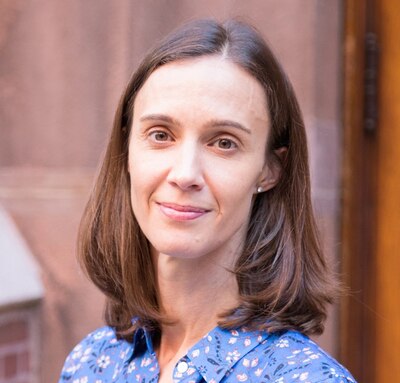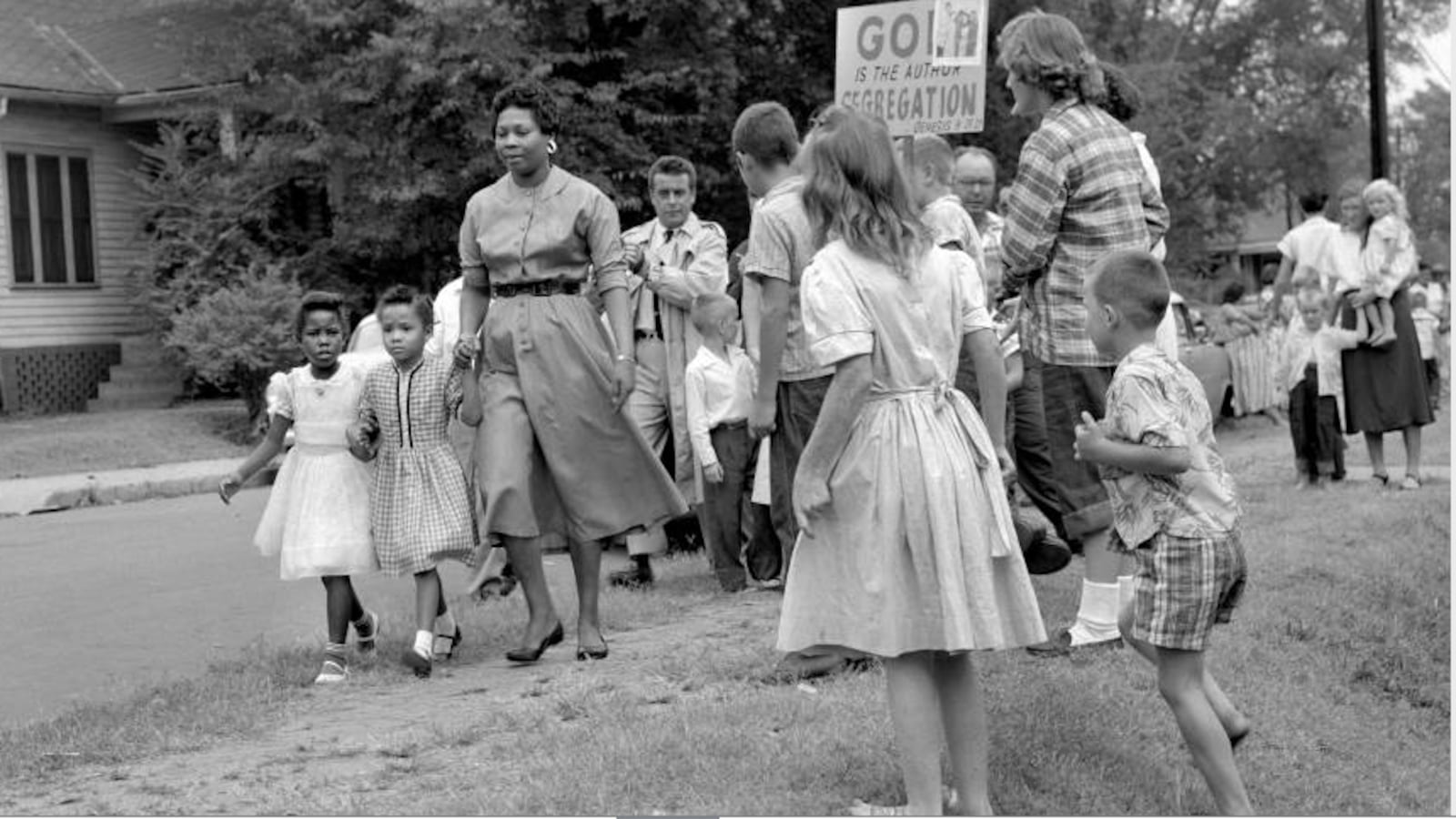In her new book Making the Unequal Metropolis, Ansley Erickson describes the desegregation and subsequent resegregation of Nashville’s public schools, carefully tracing the path of today’s educational inequalities to their roots.

Erickson, a Georgia native and professor of history at Columbia University’s Teachers College, describes how the city did better than most districts across America in achieving “statistical desegregation,” or getting black and white students to attend school with one another. But having white and black students in the same building is not enough, Erickson argues. The inequalities from the Jim Crow era were carried over into the city’s desegregated schools in different forms: black students bore the brunt of the district’s ambitious busing program and often faced inferior academic instruction once they reached their integrated school.
Today, many Nashville schools have resegregated, although black students in Nashville are joined in their high-poverty schools by an increasing number of immigrants and refugees — groups not present during the initial battle over racial equality in schooling.
Erickson’s book is not a warning against desegregation. Far from it. Instead, she hopes that communities will look toward growing research that suggests desegregation is necessary for equitable schooling. And she hopes that they will use Nashville’s story as a guide on how to get it right — and what pitfalls to avoid.
Chalkbeat talked with Erickson about what test scores do and don’t say about equality, school choice, how Nashville’s schools resegregated, and how they might desegregate again.
Why did you choose to focus on Nashville?
My husband’s job brought us to Nashville for one year (in 2003). I was a high school teacher in New York City, and I taught in the South Bronx, and before that in Central Harlem. Both of the schools I taught in were segregated by race and class. Before moving to Nashville, I started doing some reading about the city in the Harvard Civil Rights Reports (now at UCLA.) They listed Nashville as one of the more desegregated school systems historically. I was interested in Nashville’s story because it seemed so strikingly different than (the segregation) I saw in the Bronx. I had a small grant to do some documentary video work, so I did a lot of the interviews with Nashville residents who had various experiences with the beginning of busing. Once I finished it, I realized I had more fundamental historical questions I hadn’t been able to answer. I knew this would be the project I returned to in my doctoral work.
Until relatively recently, Nashville was considered a best-case scenario for school desegregation, and yet many of its schools have since resegregated. What caused resegregation to happen so swiftly in the late 1990s and early 2000s, even in cities considered socially progressive?
Until 1998, the school system had achieved greater levels of what I call statistical desegregation — because I want to recognize that desegregation isn’t a sufficient measure for full equality — at levels higher than almost any other American school system. Starting in the early 1990s, a group of local community advocates — more fairly described as a group of local business and civic leaders — began to explore what could be done to end court supervision. Mayor Phil Bredesen was a big part of this conversation. So was the Chamber of Commerce. There was a view that … the state of Nashville schools … was hampering economic growth. And the rhetoric was that (schools would improve) if they lifted the court order. The impetus was largely from white elites, but there was also frustration and dwindling satisfaction in desegregation from many African-Americans in Nashville. And so those two parties worked together to end the desegregation phase. The deal they cut was to return to neighborhood schools, and those schools quickly became very resegregated.
In the years of peak desegregation, test scores for black students reached historic heights. White students also saw improvements in scores, or at worse, their scores stayed the same. Desegregation therefore was successful in beginning to close the oft-discussed achievement gap. And yet, inequalities still persisted. What is lost in almost exclusively framing of discussions about education in terms of achievement? How can we add nuance to these conversations?
First off, from our very test-score focused moment, it’s quite striking to think of desegregation as an achievement gap-closing mechanism. In the big narrative we have of desegregation as a failure, it’s important that we see national data supporting the fact that the achievement gap closed.
"Desegregation ... had benefits that aren't going to be captured in tests."
In terms of examples of inequalities that persisted even as test scores rose, one of Nashville’s stories is the return to vocational education at the same time busing begins. Historically, (vocational education) has been more of a site for perpetuating racial and class inequality than a challenge to those inequalities. In Nashville, that pattern continued. As high schools got more diverse racially, students were channeled into unequal tracking. I heard stories from students and teachers that adults in schools made judgments about where they thought kids were going to end up, and that those judgments restricted opportunities they had in schools.
Desegregation also had benefits that aren’t going to be captured in tests. And some of those benefits relate to the fundamental questions about how kids see the world, whether they have the opportunity to be in neighborhoods new to them and in conversations with people who have different experiences of the world. For a couple of decades, lots of kids in Nashville had those kinds of experiences.
You take great pain to differentiate statistical desegregation, in which schools demographically are desegregated, from true integration, where students truly receive equal educational opportunities. What needs to happen for the latter to happen?
That is in some ways the question of 21st-century education. The lack of quality desegregation (in the past) can point to ways we can do more today. What does it mean for diverse schools to support and recognize the multiple communities their students come from? Desegregation in Nashville did not do that, by closing elementary schools in black Nashville and reasserting that white suburban Nashville communities had more of a claim on neighborhood schools than black communities did. Any numbers of ways adults interact with kids and parents needs to consciously and intently value the communities from which students come. I think when you look at the desegregation story, you see the absence of that, although you do see some instances in Nashville history, like holding PTO meetings not just at the school but in neighborhoods that serve the school. I’m sure there are efforts under way in this direction in Nashville already. They’re crucial and they need to be intentional.
Another broader way to think about this comes back to the way we think about vocational education. Certainly, in the ’80s and ’90s, there were huge disparities in the labor market by race. Schools run the risk of reproducing inequalities existing in that labor market. A robust vision of diverse but equitable schools would have to be one in which either classes that focus on preparing students for work are quite directly targeting inequality in the labor market, or aren’t just preparing students for work, but preparing them to be citizens. That might be a better pathway in education.
In many ways, Nashville illustrates the falseness of the dichotomy at the center of education politics right now: that schools can be the engine to lift children from poverty, and that with enough dedication, the challenges faced by poor children of color in other facets of society are no excuse for low achievement; or that schools can’t solve anything, because the rest of society is so messed up. What does Nashville’s story say about either side of this dichotomy?
It doesn’t work to suggest that schools alone can address every issue they face in terms of student poverty, student mobility, any number of things. But (Nashville shows that) it’s also incomplete to suggest schools play no role in addressing these challenges because historically they have at times encouraged opportunities for kids, and at times they’ve limited opportunity for kids, via tracking, via segregation, even via desegregation. What schools do really matters, but what they do will never be enough.
A lot of the alleged opposition to busing, particularly from white families, though they were least affected, was literally the time students spent on the bus. Today in Nashville, school choice means many students — perhaps especially white students in certain parts of Nashville — don’t go to their neighborhood schools, and instead, attend schools across the city. Schools in Nashville’s most “diverse” neighborhoods are still segregated. What does this mean? Can choice be harnessed to desegregate schools?
The whole concept of the neighborhood school is one that’s important to understand as much more of an imagined thing than a real thing. It’s almost always used to advocate for a particular kind of neighborhood privilege. When folks argued for a return to neighborhood schools, often what they were implicitly or explicitly calling for was fewer African-American students. At the same time, there were African-American voices starting in the ’80s and through the ’90s who were aware of the historic separation of their schools and their communities (and wanted to change that). So they encouraged neighborhood schools, and that encouraged resegregation.
"Choice in many contexts has operated to exacerbate resegregation ..."
The American story of school desegregation happened in a period where “urban” was associated with black. That ended up making it easy for white people to resist segregation in terms of resisting places. People could say, ‘I’m fine with desegregation, but I don’t want my kid to travel to that neighborhood.’ From the perspective of 2016, it’s really striking how the cultural associations with urban spaces have changed. We have ample segregation, but if you look at a (gentrifying neighborhood), which was historically black, they’re now (becoming white and middle class). In some contexts, those are exactly the communities that would have argued for neighborhood schools. Choice in many contexts has operated to exacerbate resegregation, and that works in a whole host of ways. One of those might be to facilitate white, middle-class folks from placing students in local school.
There are lots of potential challenges to the reinvestment in urban spaces. For folks interested in desegregation, it’s important to notice that desegregation happened when the idea was schools should be in suburbs. With the new embrace of urban spaces, it’s interesting to think about opportunities for desegregation now.
Editor’s Note: Periodically, Chalkbeat conducts our Chalk Talk interviews with a leader, innovator, influential thinker or hero across Tennessee’s education community. We invite our readers to contact Chalkbeat with your suggestions for future subjects.

